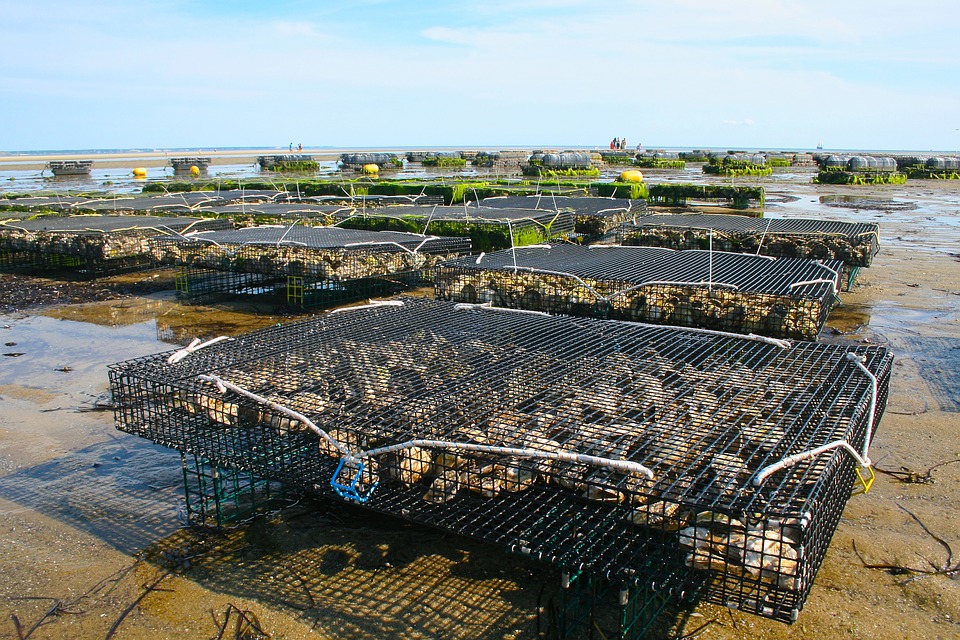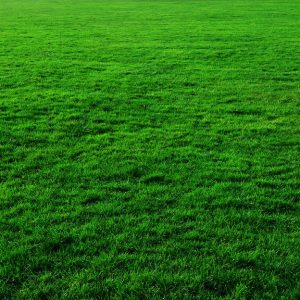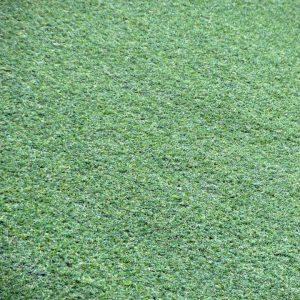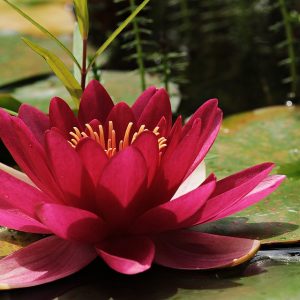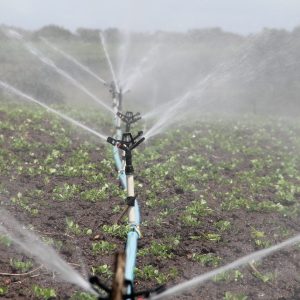Aquaponics is an intensive way of farming that can be conducted anywhere:
- It can produce a great deal more food products per unit of area than more traditional forms of farming.
- It diversifies the income for a grower, making them more resilient to fluctuations in income (e.g. when vegetables are in less demand, fish might be in higher demand. If fish profits drop, vegetable profits may increase).
- It can be viable on any scale, small scale set ups in small home garden can provide for the needs of a single family, while medium size operations on less than a quarter acre can be a viable small business, and large scale operations on many acres, even hundreds of acres can form the heart of a larger business enterprise.
- It can allow food to be produced closer to the end user in areas otherwise unsuited to farming (e.g. in a desert, in inland city areas, etc.). This reduces food miles, expenditure of fuel on food transport, reduces potential pollution, and in turn increases the freshness of food arriving at market.
- It can be more efficient use of water where water resources are limited.
- It can be environmentally friendly, containing and reusing waste, rather than returning it to the environment, and causing pollution.
E-Learning Structure
The duration of this online course is 100 hours. This consists of 10 in-depth lessons:
Lesson 1. Introduction
- What is aquaponics?
- History of aquaponics.
- Why aquaponics?
- World food.
- Urban farming.
- Cost benefit analysis.
- Is aquaponics organic.
- The aquaponics system.
- Can it be used with salt water.
- Types of Systems:constant flow closed reciprocating, open, deep water, floating raft.
- Outdoor or indoor systems.
- Barrel ponics, wick, NFT, etc.
- Advantages and disadvantages of aquaponics.
- Scale of operation.
Lesson 2. Aquaponic System Options
- Recirculating systems.
- Non recirculating (open loop systems or microponics).
- Components of commercial fish rearing systems.
- Aquaponic sub systems.
- Deep water culture (DWC).
- Intermittent flow (Ebb and flow).
- Nutrient film technique (NFT).
- Gravel bed systems.
- Barrel ponics systems.
- Equipment: commercial and backyard.
- System components.
- Tanks.
- Aeration devices.
- Solids removal: clarifiers, solids tanks, filters, screens.
- Biofilters.
- Sump and pH adjustment tank.
- Water heaters and chillers.
- Greenhouse houses and fish rearing facilities.
- Alarm and back up systems.
- Hydroponic grow beds and types of media.
- Maintenance, water monitoring and adjustment.
- Organic vs non organic.
- Combining worms with growing beds.
Lesson 3. The Science of Animal and Plant Growth
- Plant growth factors.
- How plants grow.
- Plant structure: roots, stems, leaves, reproductive parts.
- Biochemistry and aquaponics.
- Biochemical processes in a cell.
- Photosynthesis.
- Mechanisms of nutrient uptake.
- Plant nutrients.
- Role of pH in plant growth.
- Animal science.
- Bony fish (Osteichthyes) and their biology.
- Crustaceans: crabs, lobsters, shrimp and prawns.
Lesson 4. Nutrition and Controlling Growth
- Water soluble chemical compounds: ions.
- Less water soluble chemicals.
- Complex chemical compounds.
- Understanding nutrient formulae.
- Hydroponic nutrient formulae.
- Atoms, elements and compounds.
- How are chemical names written?
- What does a plant need.
- Calculating formulae.
- Mixing nutrients.
- Case study.
- Symptoms of nutrient deficiency.
- Nutrients in aquaponics.
- Variables in aquaponics: conductivity, ph control, oxygenation, beneficial bacteria in aquaponics.
Lesson 5. Selecting and Managing Animal Production: Fish and Crustaceans
- Choosing what to farm.
- Climate.
- Water.
- Finance.
- Scale of operation.
- Other resources.
- Market.
- Availability of animals.
- Risk considerations.
- Overview of main species to grow: in Asia, South Africa, Australia, U.K., Europe, North America, South America.
- Trout: Rainbow, Brown.
- Bass.
- Tilapia.
- Catfish.
- Barramundi.
- Carp.
- Mullet.
- Sunfish.
- Eels.
- Marron.
- Other species: ornamental fish, crustaceans and molluscs.
- Sourcing fish and crustaceans.
- Fish food.
- Which type of fish food to use: pellets, live food, daphnia, brine shrimp, tubifex worms, earthworms, oil meals.
- Other food.
- Fish food production: beef heartlegumes, seafood and vegetable mix.
- Earthworms: setting up, adding worms.
- Compost: understanding, making, conditions for compost production.
- Fish health.
- Common pests and diseases in aquaponics.
- Penaeid shrimp diseases.
- Fish diseases.
- Salinity and system health.
Lesson 6. Setting up an Aquaculture System
- Choosing the right sized system.
- Selecting the right components.
- Setting up the system.
- Getting started.
- Threats to the system.
- Using a greenhouse.
- Greenhouses: passive systems, active systems.
- Active solar heating.
- Greenhouse management.
- Controlling the growing environment.
- Light control.
- Air temperature control.
- Root temperature control.
- Relative humidity and vapour pressure deficit.
- Controlling humidity.
- Carbon dioxide and oxygen.
- Computer controls.
Lesson 7. Aquaponic Plant Culture
- Selecting media for aquaponic plant culture.
- Types of media Growing seedlings.
- Seed sources.
- Sowing seed.
- Seed propagating media.
- Sowing seed direct.
- Vegetables in aquaponics.
- Herbs.
- Successional planting.
- Flow charting a crop.
- Controlling plant growth: stopping, spacing, disbudding, trimming, training.
- Pollination.
- Pest, disease and other crop problems: overview, identification.
- Pest, disease and disorder control in aquaponics.
Lesson 8. Applications and Opportunities
- Aquaponics for profit.
- Economic thresholds.
- Harvest and post harvest management of fish.
- Harvest and post harvest management of vegetables and herbs.
- Harvested crop physiology: fruit ripening, respiration, when to harvest.
- How to prepare salad mixes from harvested vegetables: chlorine levels in water for washing produce, preventing bruising and rots, packaging.
- CA and MA storage Chilling damage and storage temperature.
- Harvesting and grading vegetables.
- Fruit grading systems.
- Marketing.
Lesson 9. Managing an Aquaponics Venture – including a Problem Based Learning Project (PBL – see more below)
- Case study: University of the Virgin Islands system.
- Case study: North Carolina State University system.
- Case study: Speraneo system.
- What is an aquaponic trial?
- Running an aquaponic trial.
- Research methodology.
- PBL Project: Create and present a plan with specific strategies for improving the crop production of an aquaponics system in terms of amount and quality of produce harvested based on a clear understanding of the system’s requirements and its location (greenhouse or open air; temperate, subtropical, or tropical climate).
Lesson 10. Troubleshooting
- Water supply problems.
- pH problems.
- Algae growth.
- Dirty, cloudy water.
- Water imbalances; high levels of ammonia or nitrite.
- Imbalances in gases.
- Fish troubleshooting.
- Controlling salinity and nutrients without damaging fish.
- Plant troubleshooting.
- Diseases.
- Pythium in aquaponics.
- Pests.
- Environmental physiological disorders.
- Nutrition problems in aquaponics.
- Deficiency symptoms.
- Correcting nutrient problems in aquaponics.
- Fruit set management: pollination, floral initiation, fruit growth.
- Flower and fruit development problems.
- Fish eating plant roots.
- Power losses.
- Clogging with sediment.
- Fish to plant imbalances.
- Pathogenic contamination issues.
How Does A Warnborough Online Course Work?
You can start the course whenever is convenient for you. You will be studying from home and have access to support from our qualified tutors. Practical exercises and research tasks will be set at the end of each lesson – including an assignment. You will submit this assignment to your course tutor, who will mark your work and give you constructive feedback and suggestions.
If you have any questions please contact us.

